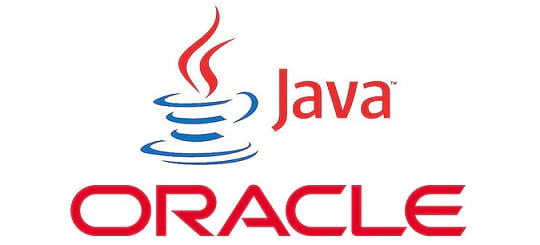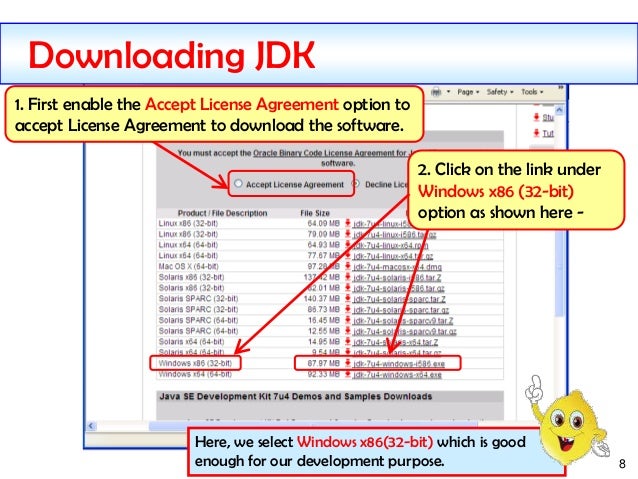JavaFX 2.2.21 can be downloaded from our website for free. This free program was originally produced by Oracle. JavaFX is developed for Windows 2000/XP/Vista/7/8/10 environment, 32 and 64-bit versions. Our antivirus analysis shows that this download is malware free. How To Get JavaFX Working On JDK 11If you're wondering how to configure JavaFX to get it to work with JDK 11, this video will be a lot of help. Mar 22, 2021 Each of these have specific prerequisites that must be met before they can be built. Win.gradle can only be used on Windows, mac.gradle on Mac, and linux.gradle on Linux. Android can be cross built from Mac, Windows, or Linux so long as the Android SDK and NDK are installed and the build knows where to find them. IOS can be cross built on Mac.
Tooling
e(fx)clipse provides JavaFX tooling for the Eclipse IDE.
Since e (fx)clipse is part if the Eclipse Release Train you can install the e (fx)clipse tooling from the Release Train Updatesite (eg Neon, Oxygen) who is already preconfigured into your install. If you are not familiar with update-sites you can follow the short guide below or use a pre-packaged version. 1 JavaFX Overview. This chapter provides an overview of the types of applications you can build using JavaFX APIs, where to download the JavaFX libraries, and a high level information about the key JavaFX features being delivered.

- JDT Support
- PDE Support
- UI DSL for authoring FXML
- ..
Runtime
It's not all about tooling in the e(fx)clipse project: we also provide a runtime platform and libraries you can use in your JavaFX 8 applications.
- EMF Edit UI for JavaFX
- Support for OSGi
- Support for the Eclipse 4 Application Platform
- ..
Platforms
Apk orgen tunggal yamaha psr 70. OpenJFX / JavaFX 8 is currently available on Windows, Mac OS X, and Linux as part of the OpenJDK 8 & Oracle JDK 8. Our tooling supports all of these three platforms.
Stay tuned
You can read about the latest developments on BestSolution's specific blog.
Are you looking for specific support?
Please check out our community section or visit also project's addons-channel. We are sure you'll find all answers needed there.
By integrating into the Eclipse JDT, e.g., by providing a specialized classpath container, e(fx)clipse allows users to develop JavaFX applications in the same fashion they develop Swing and SWT applications.
By integrating into the Eclipse PDE, e.g., by providing an enhanced PDEClasspath container, e(fx)clipse makes developing JavaFX applications for Eclipse Equinox as easy as developing SWT/Swing applications.
JavaFX 2 allows for defining the UI structure using an XML format named FXML. Unlike other XML formats, FXML has no DTD/Schema but it provides serialization for an arbitrary (JavaFX) object graph, which means standard XML editors are useless when it comes to FXML.
e(fx)clipse is going another route by providing a tooling for a very simple object graph definition language named FXGraph which gets translated into FXML in the background. So you don't need an extra library at runtime since JavaFX 2 can load FXML files natively.
One of the coolest feature of FXGraph is that it integrates with the Eclipse JDT, giving you for instance the Javadoc for all referenced elements and autocompletion support. The DSL allows the user to attach some extra information (e.g. CSS files) such that the integrated live preview can make use of them.
Almost all IDEs provide a CSS editor, but this editor only knows about the attributes used inside HTML browser applications. By providing a specialized CSS editor, which knows the CSS properties used by JavaFX 2, authoring CSS files for your JavaFX project is as easy as in web projects.
When you define your UI using FXGraph, you will see immediately the effect of your CSS changes on your application at runtime. This feature helps you try out different CSS settings without having to start and stop your application.
FXML is a DTD/Schema-less XML serialization specification for the definition of JavaFX UIs and Java object graphs in general. e(fx)clipse provides you with advanced tooling for authoring this file format. As the FXML file references Java elements, the editor tightly integrates with the Eclipse JDT such that, for instance, you can see the Javadoc of Java elements like classes and methods in your FXML editor.
EMF Edit UI for JavaFX allows you to view your EMF models in JavaFX TextFields, ListViews, TreeViews and TableViews with only a few lines of code. It provides out-of-the-box support for drag & drop, undo / redo, inline editing, dynamic icons, labels and overlays.
The e(fx)clipse standard library provides some useful extensions for writing JavaFX code. The library offers, among other features, additional layout panels people are familiar with in SWT, using Google Guice together with FXML, Eclipse databinding for JavaFX properties, and much more.
Unfortunately, JavaFX was not written with OSGi in mind so there are various sources of error when running inside OSGi. These problems include the location of the JavaFX binaries in your Java installation and class loading issues because of OSGi's visibility rules. e(fx)clipse provides helper libraries for dealing with all of those problems and makes writing JavaFX applications on top of Eclipse Equinox feel as easy as it is with SWT and Swing.


Once you start developing medium-sized to big JavaFX applications, you'll ask for a platform that provides a command/handler framework, a generic extension API, dependency injection, etc. Fortunately, such a platform is offered by the Eclipse 4.x SDK which, due to its design, can be used with any UI technology. e(fx)clipse provides so called JavaFX renderers for writing JavaFX RCP applications on this platform.
The JavaFX Software Development Kit (SDK) provides the command-line tools and technologies to develop expressive content for applications deployed to browsers, desktops, and mobile devices.
- JavaFX Desktop runtime
- JavaFX Mobile Emulator and runtime (Windows only)
- JavaFX API documentation
- Samples
The JavaFX SDK runs on Windows and Mac OS X. A beta release of the JavaFX SDK is provided for Ubuntu Linux and the OpenSolaris operating systems.
System Requirements
The system requirements for the JavaFX SDK, including the recommended version of the Java SE Development Kit (JDK), are listed in the JavaFX System Requirements document.
Installing the JavaFX SDK on Windows or Mac

- Download the latest JavaFX SDK installer file for Windows (an EXE extension) or Mac OS X (a DMG extension).
- Download older versions of the JavaFX SDK installer from the Previous Releases download page.
- After the download is complete, double-click the EXE or DMG file to run the installer. On the Mac OS X platform, double-click the open-box icon that appears after you start the installer.
- Complete the steps in the installation wizard.
- Note the default installation location:
- For Windows. The default installation location is
C:Program FilesJavaFXjavafx-sdk-version. - For Mac OS X. The default installation directory is
/Library/Frameworks/JavaFX.framework/Versions/version-number.
On Mac OS X, the installation procedure also creates the following directories: Repair corrupted audio file.
For information about samples and documentation in the SDK, see the README file in the top level of the SDK directory.
Installing the JavaFX SDK on Ubuntu Linux or OpenSolaris
- Download and save the JavaFX shell script for the Linux or OpenSolaris operating system.
- Download older versions of the JavaFX SDK installer from the Previous Releases download page.
- Run the
.shfile. For example: - Accept the license terms.
The shell script installs the JavaFX SDK in the current directory.
For information about samples and documentation in the SDK, see the README file in the top level of the SDK directory.
More Information
Discussion
Javafx Scene Builder Mac Download
We welcome your participation in our community. Please keep your comments civil and on point. You can optionally provide your email address to be notified of replies your information is not used for any other purpose. By submitting a comment, you agree to these Terms of Use.